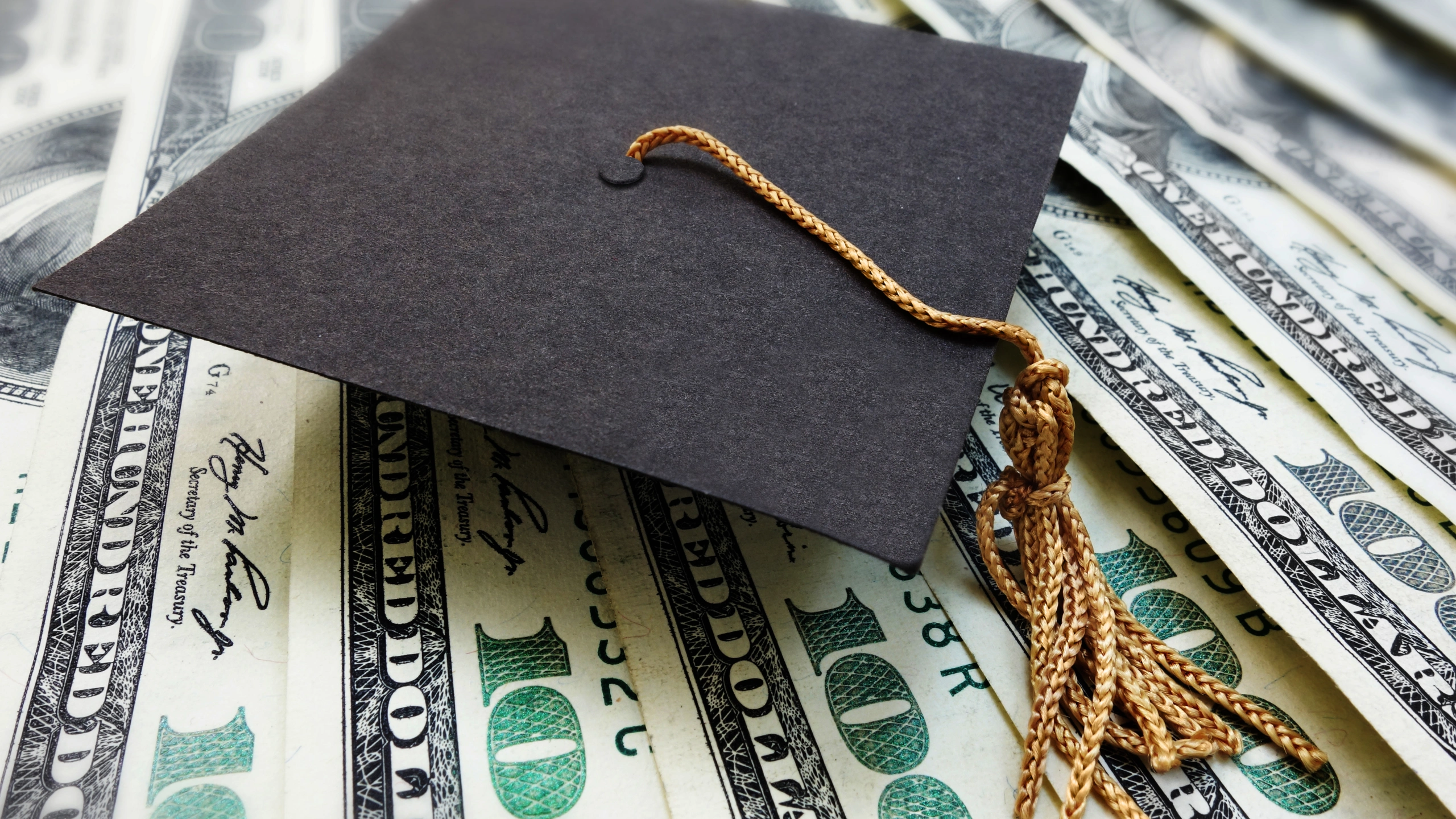*Quick Thoughts are blog posts that are designed to be shorter in length and build off the longer and more researched regular posts or to offer a short commentary to recent news events.*
The topic of student loans is never too far fetched because many people, myself included, are still paying them off. But another reason why I enjoy discussing the topic is because I remain perplexed on the opposition to student loan cancellation. In “What’s the Deal with Student Loan Cancellation?”, I showed how student loan cancellation is really a tax cut and offered a better approach for proponents to sell the plan. Yet here we are. President Biden has canceled a small portion of student debt,[i] and student loan cancellation legislation seems to be going nowhere.
In the original post, I chose not to discuss any private sector impacts or the constitutionality of student loan cancellation. Today, we’ll cover both in a discussion about Student Loan Asset-Backed Securities (“SLABS”) as well as Biden’s power to reduce and eliminate student loans. We’ll find that there are even less barriers than before.
If you’ve read the unabbreviated SLABS and got a twinge of anxiety, then Congratulations! And also, I’m sorry for you if you graduated from any school between 2007-2010. SLABS are the student loan version of Mortgage-Backed Securities (“MBS”) whose collapse created the 2008 Financial Crisis, which is still impacting us today. I’m sure immediately starting with yet another securitized loan situation would make anyone hesitant to eliminate the underlying loans. But it is an entirely different and safer situation.
The SLABS market is way smaller. At the end of 2021, over $12.2 trillion of MBS were outstanding in the United States while only $92 billion SLABS were issued in the last five years.[ii] Sallie Mae and Navient are the largest publicly traded SLABS issuers,[iii] and those companies routinely spend more cash paying off SLABS than they take in from issuing the securities.[iv] This cash dynamic and the overall economic risk is mitigated by the fact that 56% of SLABS are based on student loans that are guaranteed by the federal government.[v] Some experts are concerned about macroeconomic risk from the SLABS based on private loans and increasing general default risk.[vi] But others, myself included, assert the view that the financial market is too large and more educated from the financial crisis to let SLABS pose a serious threat to those not directly invested.[vii]
Next is constitutionality. Obviously, if Congress passes a bill and President Biden signs it, then it is law and constitutional. Granted, some will make fringe constitutional arguments, but since the New Deal, the government has routinely made economic policy without much court intervention.[viii]
But the real question is this: How much student debt can Biden cancel without Congress? President Biden has always been skeptical about his authority to cancel student loans unilaterally.[ix] In Biden v. Nebraska,[x] the Supreme Court struck down Biden’s plan to cancel $20,000 of student debt for some borrowers, but the Court left the status of the law unclear. Biden sought to cancel this debt with authority granted to him under the Higher Education Relief Opportunities for Students Act of 2003, which is better known as the HEROES Act.[xi] This is the same law that allowed his predecessor to pause student loan payments.[xii] However, a 6-3 majority (read: all the conservative justices), ruled that this plan essentially exceeded the authority Congress granted to the executive branch and effectively left the courts in a position to judge whether future plans would do the same.[xiii] Since the ruling, Biden has continued to cancel debt and rolled out the SAVE Plan, which was designed to alleviate some of the loan payment burden.[xiv] He has done this by modifying existing programs, but as conservative commentators have noted, these actions are subject to challenge as well under the precedent set in Biden v. Nebraska.[xv]
This leaves President Biden in a cat-and-mouse game with the courts until he gets a congress that is favorable to canceling student loans. Biden could continue to challenge the legal precedent by creating larger HEROES Act-based relief programs since these types of tactics have arguably fared well for prior presidents. In an extreme example from 1937, President Roosevelt openly advocated for deeply unpopular court-packing legislation after the Supreme Court struck down vital parts of the New Deal.[xvi] The court-packing bill never made it to a full senate vote, but many believe that asserting this plan led to significantly curbing the court’s willingness to rule on economic regulations.[xvii] However, regarding the student loan debate, the courts have seemingly waded back into these waters, and Biden could lure the justices into a similar trap. This approach requires both political capital and focus, which Biden has been unwilling to commit to for this issue.
Also, this cat-and-mouse game approach raises questions about the precedent being set for future presidents. Voters may permit a president taking quasi-constitutional actions for student loan relief, but oppose a different president pursuing comparable activities on another issue. However, this is the nature of executive power, and every president will face similar challenges during their terms. This is why, as voters, we must always remember in choosing a president to heavily consider a candidate’s commitment to defend the Constitution and capacity for good judgment.
Either way, there’s been no indication that Biden is going to challenge the Court in this way. Biden recently unveiled his “Plan B” in response to the Supreme Court ruling.[xviii] However, judging by his tone, he expects the plan to pass Court scrutiny rather than challenge the Court’s role in reviewing his plans.[xix] We’ll find out as conservative attorneys general continue to challenge Biden on student loan cancellation.[xx] Biden had stern words for the Justices at the State of the Union about reproductive rights,[xxi] but we appear to be at a standstill with student loan cancellation. If the issue gains more momentum in the minds of voters, perhaps we’ll see Biden activate in a way we haven’t seen before.
[i] https://www.nerdwallet.com/article/loans/student-loans/if-scotus-blocks-student-debt-relief-1965-law-could-be-plan-b
[ii] https://youtu.be/QqXcZ10BztE?list=PLCjwFLItEzuGpsjYa9jQ1UItK8qakLelG (CNBC)
[iii] See note ii.
[iv] https://www.sec.gov/ixviewer/ix.html?doc=/Archives/edgar/data/0001593538/000095017024020149/navi-20231231.htm (Navient) ; https://www.sec.gov/ixviewer/ix.html?doc=/Archives/edgar/data/1032033/000162828024006382/slm-20231231.htm (Sallie Mae)
[v] See note ii.
[vi] See note ii.
[vii] See note ii.
[viii] https://www.law.cornell.edu/wex/lochner_era
[ix] https://www.forbes.com/sites/zackfriedman/2020/12/23/why-joe-biden-wont-cancel-student-loans/?sh=28b8817a774e
[x] Biden v. Nebraska, 600 U.S. ___ (2023). For a brief overview, https://www.oyez.org/cases/2022/22-506
[xi] See note x.
[xii] See note x.
[xiii] See note x.
[xiv] https://www.cnn.com/2023/10/22/politics/biden-student-loan-forgiveness-supreme-court/index.html ; https://www.scotusblog.com/2023/06/supreme-court-strikes-down-biden-student-loan-forgiveness-program/
[xv] https://www.scotusblog.com/2023/06/supreme-court-strikes-down-biden-student-loan-forgiveness-program/
[xvi] https://www.law.cornell.edu/wex/lochner_era
[xvii] https://constitutioncenter.org/blog/how-fdr-lost-his-brief-war-on-the-supreme-court-2 and see note xvi.
[xviii] https://www.cnbc.com/2024/04/14/how-bidens-new-student-loan-forgiveness-plan-differs-from-his-first-.html
[xix] https://www.whitehouse.gov/briefing-room/speeches-remarks/2024/04/08/remarks-by-president-biden-on-his-student-loan-debt-relief-plan-for-tens-of-millions-of-americans-madison-wisconsin/#:~:text=And%20altogether%2C%20my%20administration%20has,that%20they%20were%20entitled%20to.
[xx] https://www.nytimes.com/2024/04/13/business/biden-save-student-loans-courts.html


